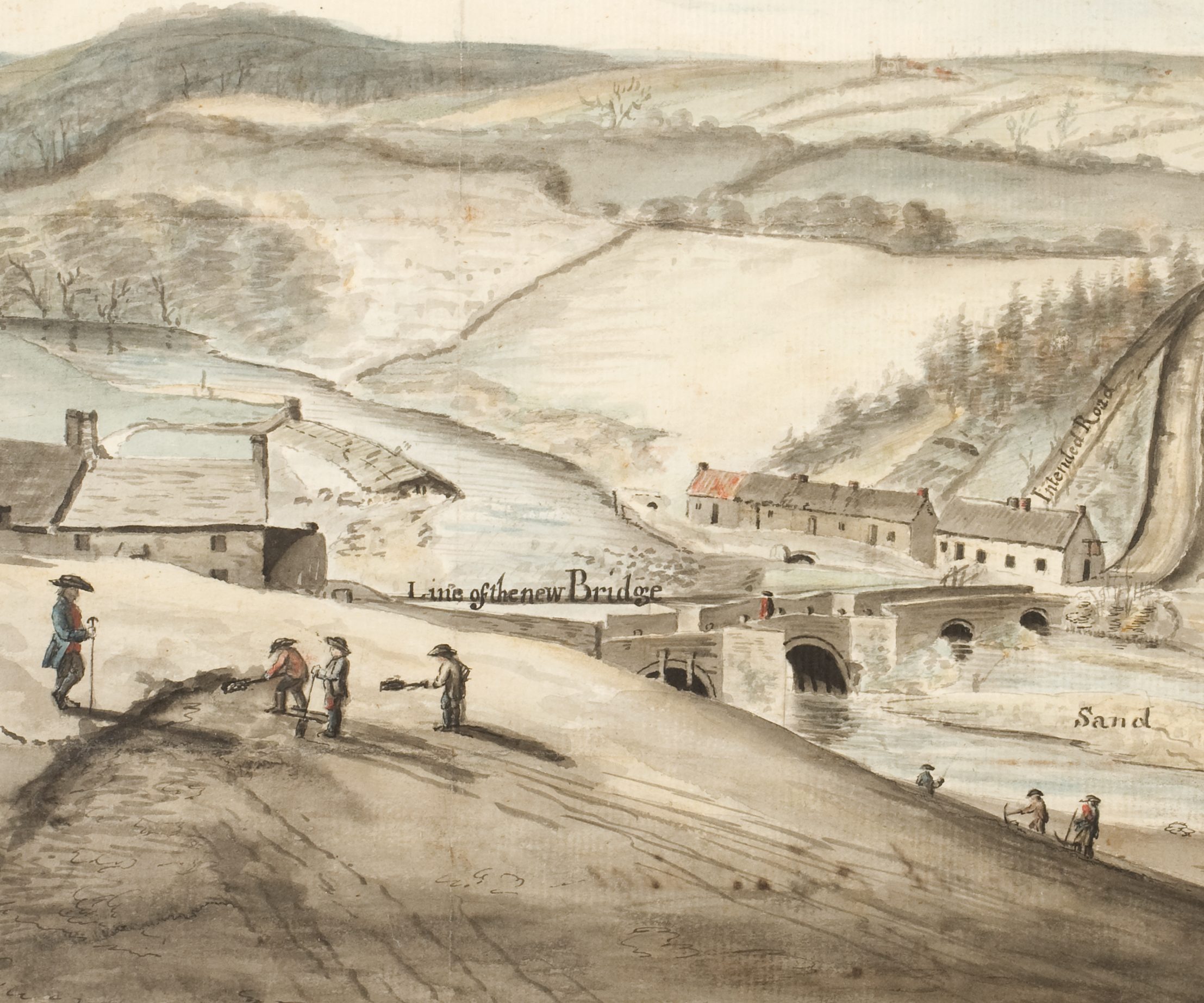
In Norman times, there was one bridge in the town across the Aln. It went north from near the Castle and was very narrow with recesses on each side over each pier to allow pedestrians to stand aside.
Tate tells of an ancient bridge which spanned the Aln, just downstream from where the Lion Bridge now stands. In 1347 it was “ruined and broken”, and Edward III granted the tolls for three years to the men of Alnwick, so that they could repair it and pave the town. Whether it was then repaired or rebuilt, it seems to have survived until 8th November, 1770, when a great flood washed away much of the river bank. The south end of the bridge sank and became dangerous. On the 10th of December, the corporation paid John Shepherd 3s. to watch the bridge all night and warn people of the danger. Then on the 15th of December the south arch fell in, leaving the others tottering. Two years later, the problem had only been partially addressed, and the bridge was then described as “in a ruinous condition”, and “the passage over it hazardous”. It was replaced with the Lion Bridge in 1773.
At this time access to both Alnwick Abbey and to Denwick was by fords. Later a narrow wooden footbridge was built at the bottom of Canongate to provide a link to the Abbey. Carriages continuing to use the nearby ford. The present Canongate Bridge was built in 1821. Denwick Bridge is dated 1766.